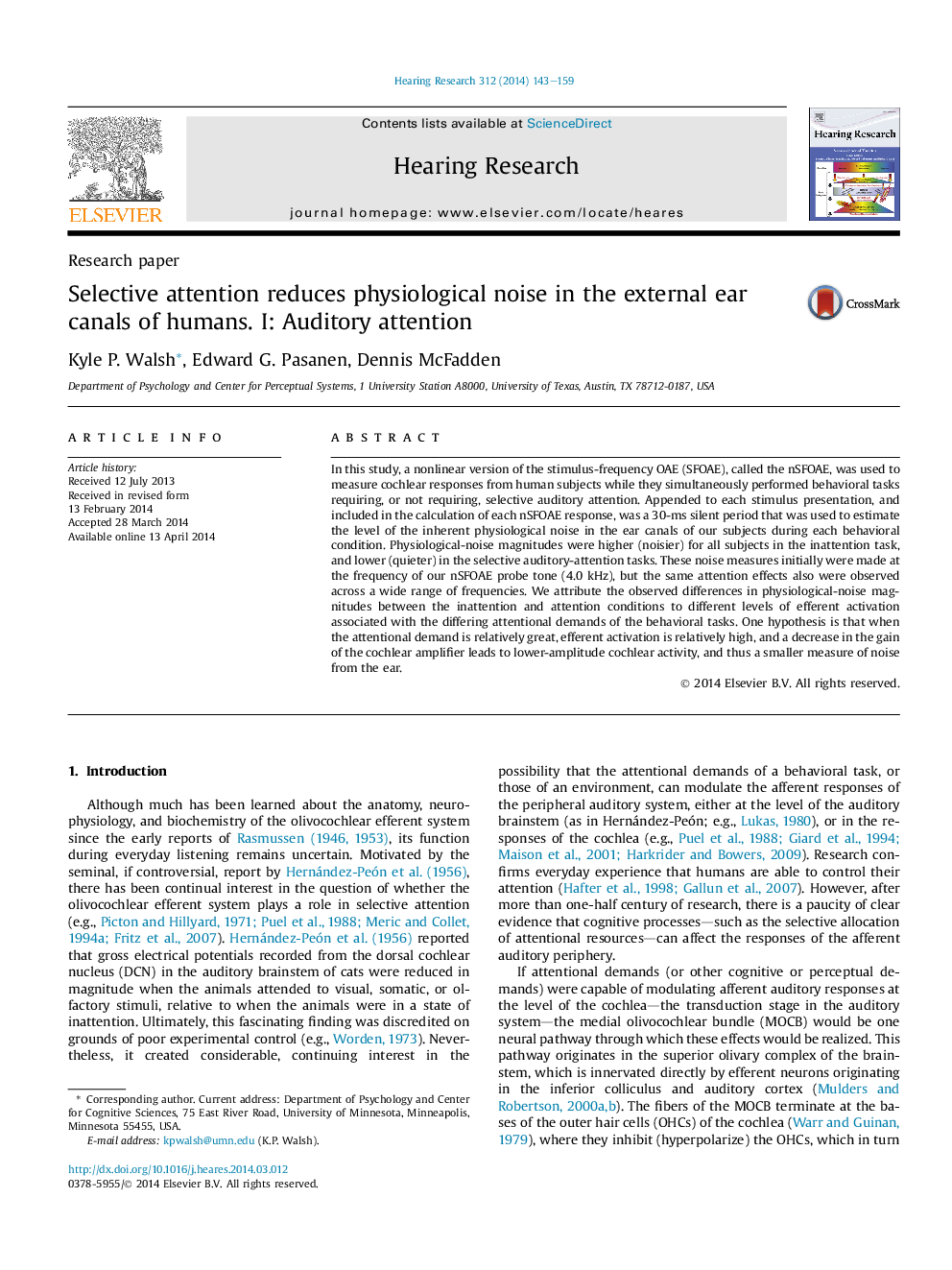| Article ID | Journal | Published Year | Pages | File Type |
|---|---|---|---|---|
| 6287408 | Hearing Research | 2014 | 17 Pages |
â¢Physiological noise was weaker during selective auditory attention than inattention.â¢Noise levels were similar for the dichotic- and diotic-attention conditions.â¢Noise levels were similar whether the right or left ear was attended.â¢The effects of attention were evident across the frequency spectrum.â¢The effects of attention also were evident at subjects' SOAE frequencies.
In this study, a nonlinear version of the stimulus-frequency OAE (SFOAE), called the nSFOAE, was used to measure cochlear responses from human subjects while they simultaneously performed behavioral tasks requiring, or not requiring, selective auditory attention. Appended to each stimulus presentation, and included in the calculation of each nSFOAE response, was a 30-ms silent period that was used to estimate the level of the inherent physiological noise in the ear canals of our subjects during each behavioral condition. Physiological-noise magnitudes were higher (noisier) for all subjects in the inattention task, and lower (quieter) in the selective auditory-attention tasks. These noise measures initially were made at the frequency of our nSFOAE probe tone (4.0Â kHz), but the same attention effects also were observed across a wide range of frequencies. We attribute the observed differences in physiological-noise magnitudes between the inattention and attention conditions to different levels of efferent activation associated with the differing attentional demands of the behavioral tasks. One hypothesis is that when the attentional demand is relatively great, efferent activation is relatively high, and a decrease in the gain of the cochlear amplifier leads to lower-amplitude cochlear activity, and thus a smaller measure of noise from the ear.
